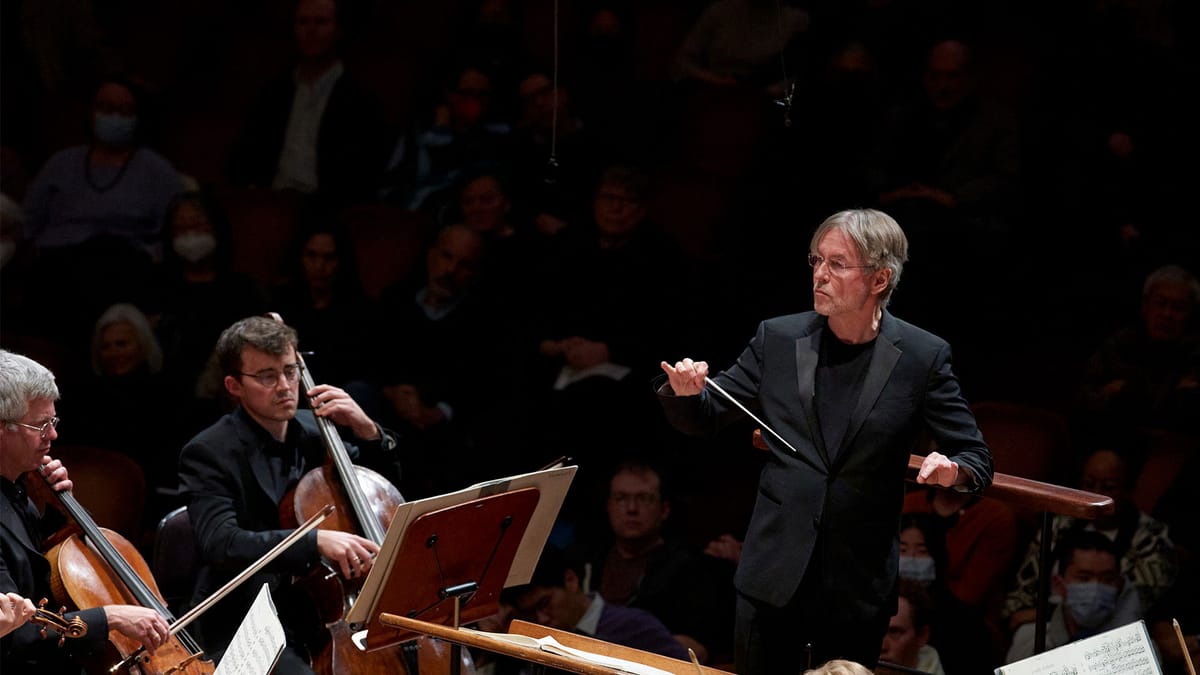In This Program
The Concert
Thursday, September 12, 2024, at 7:30pm
Esa-Pekka Salonen conducting
Jean Sibelius
Karelia Suite, Opus 11 (1893)
Intermezzo
Ballade
Alla marcia
Edvard Grieg
Peer Gynt Suite No. 1, Opus 46 (1875)
Morning
Åse’s Death
Anitra’s Dance
In the Hall of the Mountain King
Intermission
Claude Debussy
Danses sacrée et profane (1904)
Danse sacrée: Très modéré
Danse profane: Modéré
Katherine Siochi harp
Maurice Ravel
Daphnis et Chloé, Suite No. 2 (1912)
Lever du jour (Sunrise)
Pantomime
Danse générale
This concert is presented in partnership with

Concert Sponsor

Esa-Pekka Salonen and the Board of Governors of the San Francisco Symphony gratefully acknowledge the support of San Francisco Arts Commission.
Music for A City
In founding the San Francisco Symphony in 1911, San Francisco’s civic leaders sought to create a permanent orchestra in our music-loving city. For more than 85 years, the San Francisco Symphony has partnered with the San Francisco Arts Commission to enrich and serve its vibrant community through music. The partnership dates back to 1935, when President Franklin Delano Roosevelt encouraged all cities to support local symphonies believing that music was good for the soul of the people. San Franciscans followed suit and passed an historic charter amendment allocating funds to support the Symphony.
Through this mutually beneficial partnership, the Arts Commission funding contributes to the Symphony’s community programs, supports concerts such as Día de los Muertos and Lunar New Year, and helps bring a broad audience to experience its music and programs. This partnership also enables the Arts Commission to distribute funds to support and strengthen cultural equity throughout the city.
The San Francisco Symphony is honored to partner with the San Francisco Arts Commission to continue its work as San Francisco’s orchestra.
About All San Francisco
When Louise M. Davies Symphony Hall opened in 1980, the San Francisco Symphony inaugurated what has become a beloved tradition: the All San Francisco Concert. This performance for the community, presented in partnership with the San Francisco Arts Commission, is one of the highlights of the Symphony’s season opening activities, and is dedicated to the Bay Area's many impactful community groups and nonprofit organizations for their invaluable work in enriching our region. This year we are thrilled to welcome thousands of community members to this special concert.
In 2007, the SF Symphony and our partners sought to honor the founder of the All San Francisco Concert and San Francisco Symphony Board member Ellen Magnin Newman through the creation and sponsorship of the Ellen Magnin Newman Award. This award is now presented annually at the All San Francisco Concert to a Bay Area community-based organization that strengthens the region’s cultural fabric and serves families and individuals to create a more just and equitable society for everyone who lives here. The 2024 recipient of the Ellen Magnin Newman Award is Brava! for Women in the Arts.
2024 ALL SAN FRANCISCO COMMITTEE
Ellen Magnin Newman, Honorary Chair
Brittany Ford, MAGIC SF, Co-Chair,
San Francisco Public Defender’s Office
Devi Zinzuvadia, Co-Chair,
San Francisco Human Rights Commission
Erik Auerbach, First Exposures
Ryan Babbitt, Booker T. Washington Community Service Center
Cristina Barron, Senior Advisor, Tides Center
Mariah Bozeman, Nonprofit Advisor
Jennifer Byrd, The Salvation Army
Carrie Cottini, Edible Schoolyard Project
Cynthia Inaba, Fine Arts Museums of San Francisco
Rodney Earl Jackson Jr., San Francisco Bay Area Theatre Company (SFBATCO)
Raffaella Falchi Macias, Youth Art Exchange
Andrea Martin, Asian Art Museum
Heather Mathews, Huckleberry Youth Programs
Robert Melton, Commonwealth Club World Affairs of California, Art Curator/Co-Chair Arts Forum
Barbara Ockel, Shipyard Trust for the Arts (STAR)
Ryan Pinter, The Stanford Fund
Eleanor Pollak, San Francisco Symphony Volunteer Council Chair
Josué Rojas, San Francisco Based Fine Artist & Muralist
Kathleen M. Sullivan, PhD, Openhouse
Judy Tsang, ITVS
Celebrating Brava! for Women in the Arts
The All San Francisco Committee is proud to honor Brava! for Women in the Arts as this year’s recipient of the Ellen Magnin Newman Award.
Brava! for Women in the Arts celebrates nearly 40 years as a professional arts organization and 28 years of owning and operating the Brava Theater Center. Brava is dedicated to cultivating the artistic expression of women, 2SLGBTQIA+ people, people of color, youth, and other underrepresented voices. Brava’s recent producing history includes Quinteto Latina's ¡Chicanisíma!, Bryan Pangilinan and Gayle Romasanta’s Larry the Musical, Diamond Wave’s THEYFRIEND Nonbinary Cabaret, Chelis López’s monthly podcast series lndómitas, La Mezcla’s Ghostly Labor, Liliana Herrera’s Golondrina!, and Ballet Nepantla.
Brava’s current artistic programming includes traditional and contemporary music festivals, a variety of film festivals, contemporary and experimental theatrical productions, musicals, international comedy shows, lectures, and professional dance productions—all making Brava one of the most eclectic and multifaceted performing arts venues in the Bay Area.
“In a city where spaces like Brava are more and more scarce, its presence serves as a lifeline for artists from underserved communities like mine. It’s a welcoming haven that shelters and nurtures the creative endeavors of local artists at a professional level.”
—Virginia Blanco
La Lengua Teatro en Español
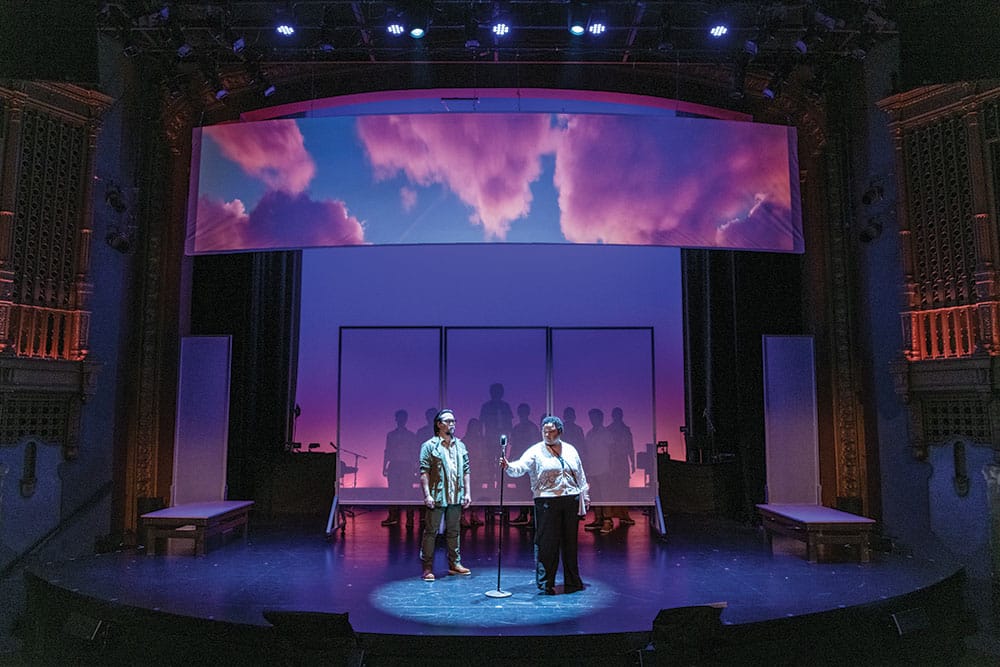
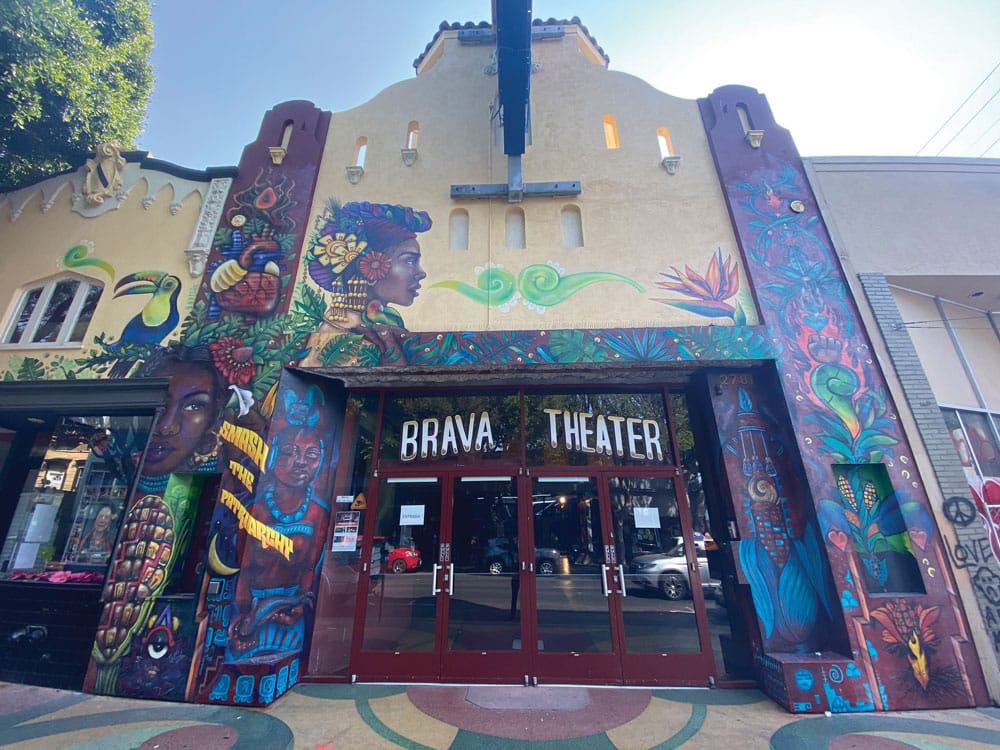
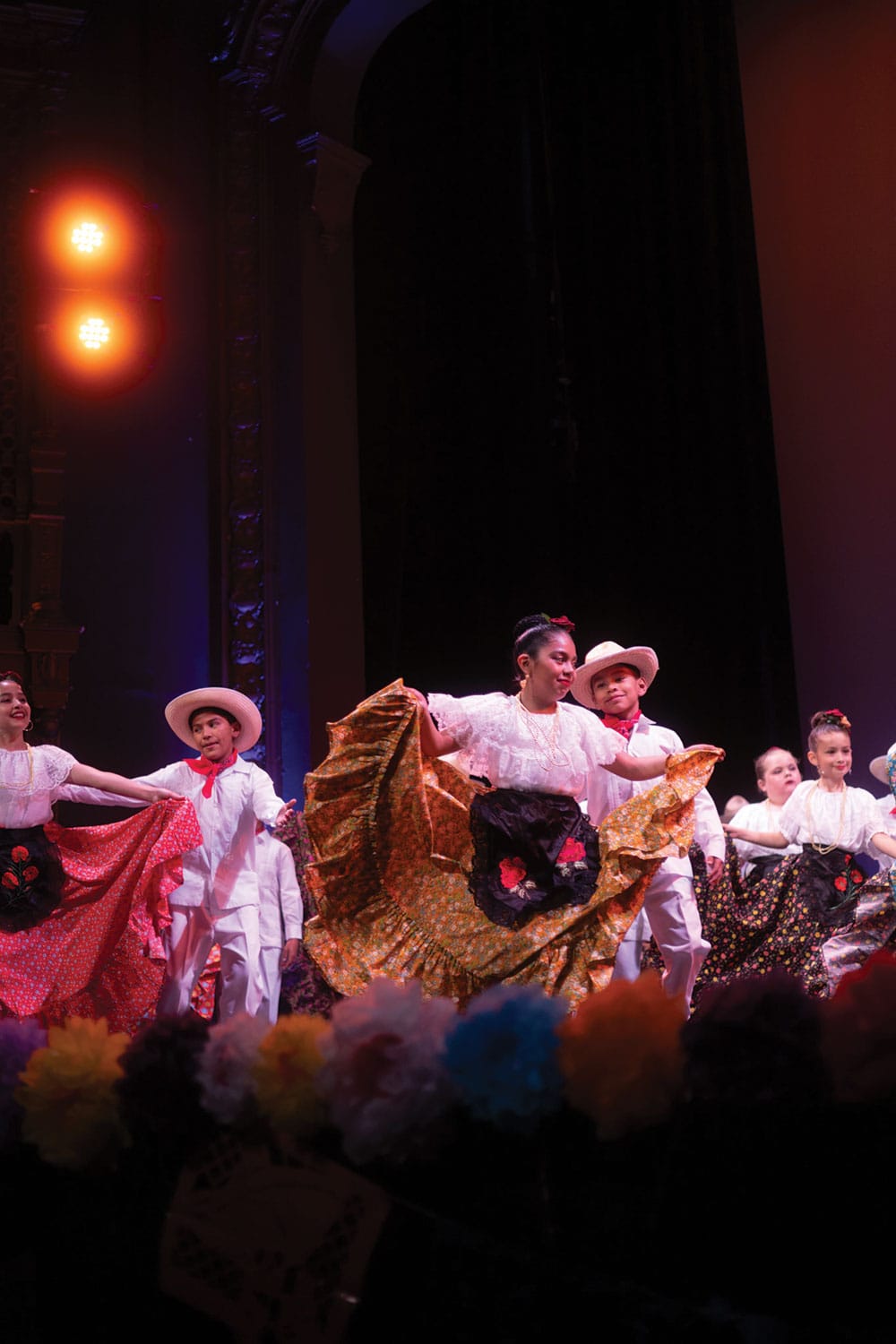
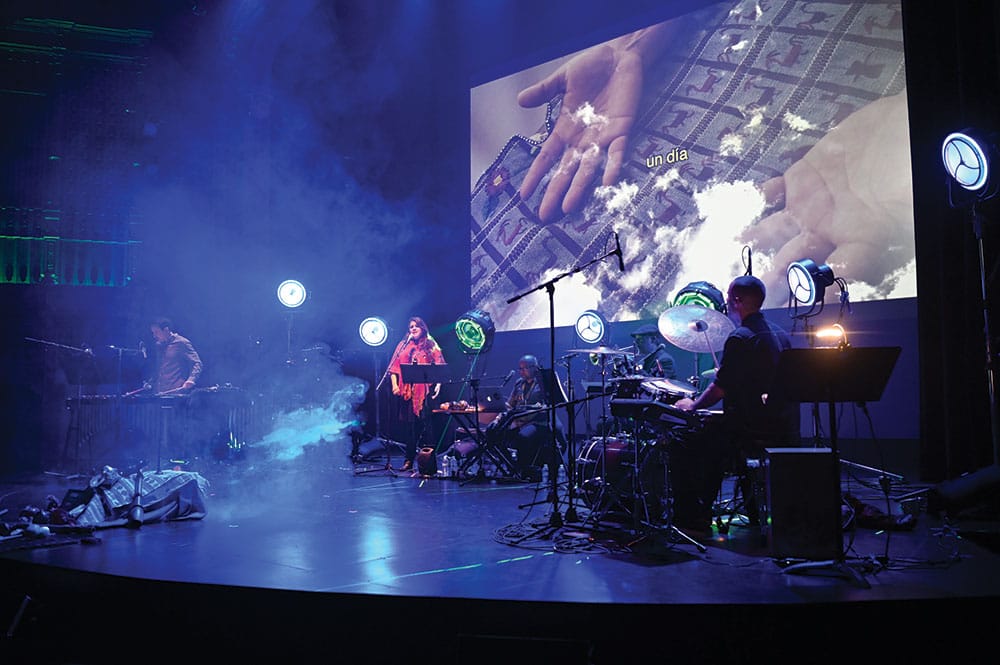
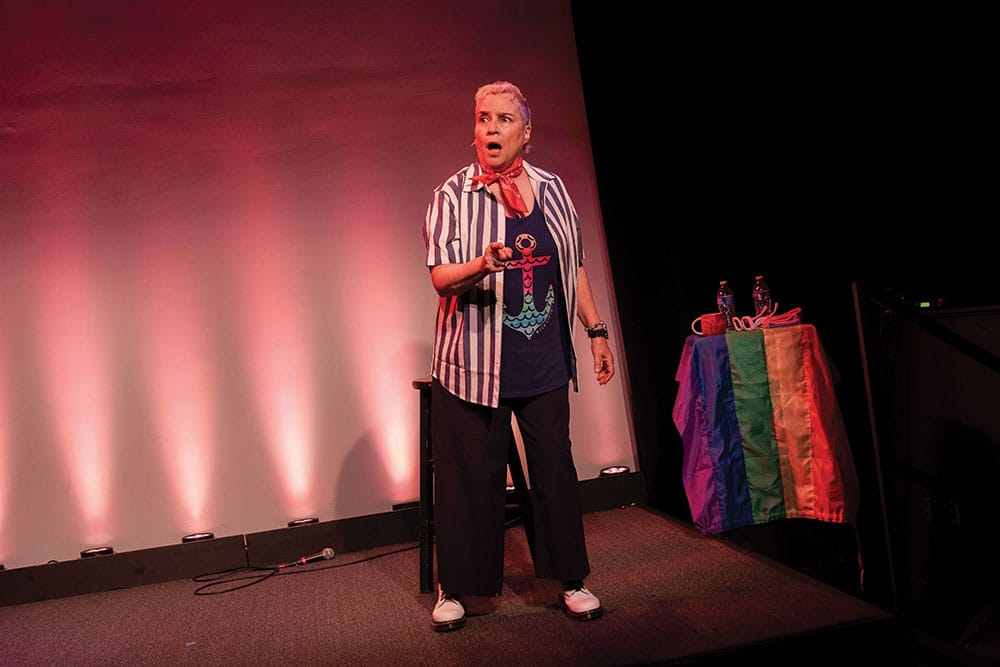
Program Notes
Karelia Suite, Opus 11
Jean Sibelius
Born: December 8, 1865, in Hämeenlinna (Tavastehus), Finland
Died: September 20, 1957, in Järvenpää, Finland
Work Composed: 1893
SF Symphony Performances: First and only—May 2017. Charles Dutoit conducted.
Instrumentation: 2 flutes, piccolo, 2 oboes, English horn, 2 clarinets, 2 bassoons, 4 horns, 3 trumpets, 3 trombones, tuba, timpani, percussion (triangle, cymbals, tambourine, and bass drum), and strings
Duration: About 14 minutes
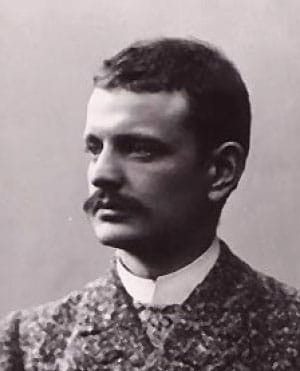
In the early 1890s, Jean Sibelius emerged as the leading composer of Finnish nationalism. Finland’s folk heritage had been largely codified during the 19th century, especially through the publication of the Kalevala, the national epic compiled from ancient pagan myths. Before long, Finns inspired by these writings turned their attention to the remote expanses of Karelia, in eastern Finland near the White Sea, where ancient poetic forms still survived. These discoveries gave rise to the 19th-century Finnish brand of Romanticism known as Karelianism. Sibelius was swept up in the excitement, and in 1891 he traveled to Karelia to visit a renowned folk singer and transcribe the pieces she performed.
Sibelius was idolized by students at Helsinki University, who in 1893 decided to mount a series of historical scenes depicting incidents of Karelian history. The pageant brought together a number of leading lights from the world of the arts. Sibelius wrote the music, and the scenic design was entrusted to the painter Akseli Gallen-Kallela, the sculptor Emil Wikström, and the architect (and writer) Johan Jacob Ahrenberg. On November 19, the day after the second airing of the pageant, Sibelius conducted the Philharmonic Society orchestra in an extended selection of his Karelia music, and he would lead suites of the score in ensuing years.
THE MUSIC
It seems strange to see an opening movement called Intermezzo, to be sure, but that is not the role this music played in the Karelia pageant, where it separated the third and fourth scenes. The four horns intone a fanfare over murmuring strings and timpani, the orchestral texture builds, and then everything recedes to a quiet conclusion. The movement gives the impression of a group of hunters arriving from afar, passing by the listener, and then continuing off into the distance.
The Ballade was set in the year 1446 in the Viipurni Castle, where the nobleman Karl Knutsson Bonde, later the king of Sweden, watches his retinue dance and then is entertained by a ballad singer. It is a mournful minuet, the gentle contours of its modal melody enlivened by a lightly scurrying line in the cellos. The ballad itself falls near the end of the tableau, after a grand pause, where a baritone sings a Swedish folksong. Here he is transformed into an English horn, which is accompanied by pizzicato chords from the strings.
The Suite concludes with the Alla marcia. It served as an intermezzo following the fifth scene, which involved a battle in 1580 where the Karelian town of Käkisalmi was seized from the Russians by Baron Pontus De la Gardie, a French nobleman in the military employ of Sweden. It is hard to imagine the baron’s soldiers coming across as terribly dignified in this bouncy movement.
—James M. Keller
Peer Gynt, Suite No. 1, Opus 46
Edvard Grieg
Born: June 15, 1843, in Bergen, Norway
Died: September 4, 1907, in Bergen
Work Composed: 1874–75 (rev. 1888)
SF Symphony Performances: First—January 1912. Henry Hadley conducted. Most recent—December 2009. Donato Cabrera conducted.
Instrumentation: 2 flutes, piccolo, 2 oboes, 2 clarinets, 2 bassoons, 4 horns, 2 trumpets, 3 trombones, tuba, timpani, percussion (triangle, cymbals, and bass drum), and strings
Duration: About 13 minutes
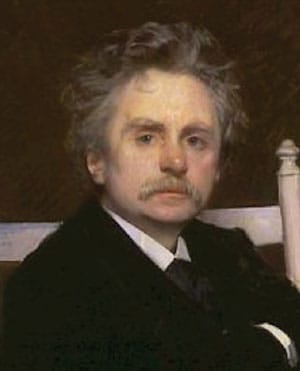
Edvard Grieg stands as the most essential composer in the history of Norwegian music, a distinction he already clinched during his lifetime and would not relinquish in posterity. When he was growing up, his native country could offer a composer only limited opportunities for advanced study; and so he left Norway to enroll at the Leipzig Conservatory. Following his conservatory studies, he spent a period in Copenhagen, which was then enjoying the most cosmopolitan musical life of any Nordic city. He returned to Norway in 1866 and it would remain his home for the rest of his life.
Norway’s most significant literary figure at that time was Henrik Ibsen (1828–1906), although his countrymen were slow to recognize that fact. Unlike Grieg, he enjoyed a strictly Norwegian upbringing. Success eluded him, and he grew so disenchanted that in 1864 he left for Italy, where he mostly remained in self-
imposed exile for 27 years.
When Ibsen began sending parts of his Peer Gynt manuscript to his publisher, he explained: “Peer Gynt was a real person who lived in the Gudbrandsal, probably around the end of the last century. . . . Not much more is known about his doings than you can find in Asbjørnsen’s Norwegian Fairy Tales. . . . So I haven’t had much on which to base my poem, but it has meant that I have had all the more freedom with which to work on it.” Left to his own devices, Ibsen came up with a meandering tale about an antihero (as described by Rolf Fjelde, who translated the play into English) “with no ruling passion, no calling, no commitment, the eternal opportunist, the charming, gifted, self-centered child who turns out finally to have neither center nor self.” In the course of 40 scenes, Peer Gynt has a variety of adventures and travels as far as North Africa before arriving back in Norway for a hallucinatory finale in which he is faced with the strands of his life that have gone awry.
The play met with reasonable success when published, but it didn’t receive a staged production until 1876. Ibsen had written from Italy to ask Grieg to provide incidental music, and in the end he provided 26 separate items for the play, totaling about 90 minutes of music.
Grieg extracted two concert suites from his Peer Gynt music, the first published in 1888. The Suite No. 1 is the more famous, and for many decades it was a staple of music education curricula for the young. Most people probably assume that its opening movement, Morning Mood, depicts the sun of dawn playing among the fjords, but in the play it accompanies a sunrise in the North African desert. Åse’s Death involves the death of Peer’s mother, whom he treated ungratefully but whose passing he mourns deeply. Anitra’s Dance serves as a seductive waltz in the tent of an Arab chief. In the Hall of the Mountain King, Peer matches wits with a menacing troll king.
—J.M.K.
Danses sacrée et profane
Claude Debussy
Born: August 22, 1862, in Saint-Germain-en-Laye, France
Died: March 25, 1918, in Paris
Work Composed: 1904
SF Symphony Performances: First—November 1973. Leon Fleisher conducted with Marcella de Cray as soloist. Most recent—May 2006. Edwin Outwater conducted with Douglas Rioth as soloist.
Instrumentation: Solo harp and strings
Duration: About 10 minutes
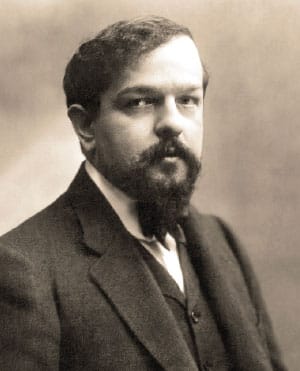
In 1897 the Parisian company Pleyel designed a harp with 46 strings, rather than the standard 32 strings that can be adjusted sharp or flat in pitch by pedals. To promote the invention, the company commissioned Debussy’s Danses sacrée et profane. In the end, Pleyel’s harp was a failure: hideously heavy, it also required players to learn an entirely new technique and was worse at enabling many common harp effects. Debussy’s dances, however, have endured—now performed on the standard pedal harp.
The Danse sacrée is solemn and atmospheric, its modal harmonies give it an antique flavor. Many listeners will be reminded of Erik Satie’s Gymnopédies—pieces Debussy liked so well that he orchestrated two of them. The Swiss conductor Ernest Ansermet pointed out that the Danse sacrée was based on a piano piece by his teacher, Francisco de Lacerda, a Portuguese composer who lived in Paris for a time, where he became friendly with Debussy and Gabriel Fauré. Manuel de Falla claimed the Danse profane as one of Debussy’s Spanish pieces. You can hear what he meant, though the dominant rhythm is that of a waltz. The final cadence is distinctly and delightfully profane.
—Adapted from a note by Michael Steinberg
Daphnis et Chloé, Suite No. 2
Maurice Ravel
Born: March 7, 1875, in Ciboure, France
Died: December 28, 1937, in Paris
Work Composed: 1909–12
SF Symphony Performances: First—July 1930. Artur Rodzinski conducted Suite No. 2. Most recent—June 2023. Esa-Pekka Salonen conducted the complete concert version.
Instrumentation: 2 flutes (2nd doubling piccolo), alto flute, piccolo, 2 oboes, English horn, 2 clarinets, bass clarinet, E-flat clarinet, 3 bassoons, contrabassoon, 4 horns, 4 trumpets, 3 trombones, tuba, timpani, percussion (triangle, tambourine, cymbals, castanets, snare drum, bass drum, and glockenspiel), 2 harps, celesta, and strings
Duration: About 16 minutes
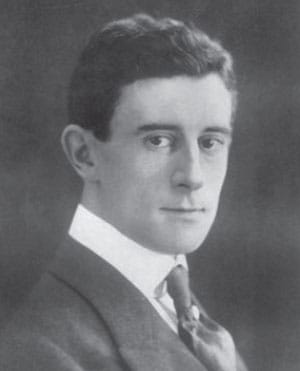
When he was approached about writing the music for a new ballet that Serge Diaghilev was planning for his Ballets Russes, Maurice Ravel became as excited as was seemly within the bounds of his even-tempered nature. The Ballets Russes had arrived in Paris in 1909, and a commission from the company was a signal that a composer had arrived at the summit of cultural life in the city that prided itself as the summit of culture.
Fokine had been urging Diaghilev to consider a ballet on the myth of Daphnis and Chloé, and early in 1909 he began working with Ravel to devise a suitable scenario. For their source they turned to the pastoral romance attributed to the third-century Greek author Longus, as filtered through the late 16th-century French poet Jacques Amyot. The going was not easy. Whether due to the logistics of collaborating with his Russian colleagues or to some personal block, Ravel fell farther and farther behind schedule—so much so that at one point Diaghilev came close to canceling the whole project. Following considerable lobbying by Ravel’s publisher, Jacques Durand, the impresario’s better judgment ruled, and the ballet finally made its way to the stage of the Théâtre du Châtelet in June 1912—about two years after Diaghilev had hoped—with Vaslav Nijinsky dancing the role of Daphnis and with Tamara Karsavina as Chloé. Although it was revived in Paris the next season and in 1914 received a production in London, Daphnis et Chloé has enjoyed only sporadic success in the world of ballet. Ravel’s score, however, has achieved the status of a classic.
In the Suite No. 2, Ravel’s first section, Sunrise, immediately proclaims his mastery as an orchestrator. Harps, flutes, and clarinets flutter quietly over the hushed background of the muted string section, which is divided into ten parts. Over the course of the opening two measures, however, the string section gradually grows to full strength by observing Ravel’s extraordinary direction, “Remove the mutes one by one beginning with the first stands.” This imaginative timbral alteration, combined with a theme based on a rising contour, growing out of the depths of the orchestra, creates one of the most evocative sunrises—indeed, one of the most captivating depictions of nature—ever committed to musical staves. In the second portion of the score, Pantomime, the woodwinds often come to the fore, playing as a section to yield a shimmering brilliance. In Daphnis et Chloé, Ravel employs the largest orchestra he would ever require, and he uses it with consummate skill. Rather than relying on its resources for a mere show of force, he often spotlights solo players in a way that recalls chamber music. Only in the Danse générale does Ravel break into wildness.
—J.M.K.
About the Artists
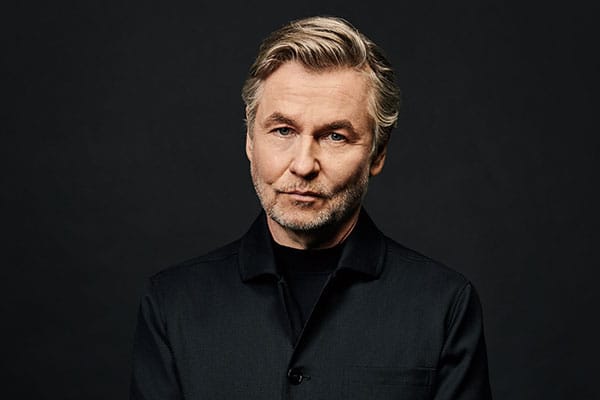
Esa-Pekka Salonen
Music Director
Known as both a composer and conductor, Esa-Pekka Salonen is the Music Director of the San Francisco Symphony. He is the Conductor Laureate of the Los Angeles Philharmonic, where he was Music Director from 1992 until 2009, the Philharmonia Orchestra, where he was Principal Conductor & Artistic Advisor from 2008 until 2021, and the Swedish Radio Symphony Orchestra. As a member of the faculty of Los Angeles’s Colburn School, he directs the preprofessional Negaunee Conducting Program. Salonen cofounded, and until 2018 served as the Artistic Director of, the annual Baltic Sea Festival, which invites celebrated artists to promote unity and ecological awareness among the countries around the Baltic Sea.
Salonen has an extensive and varied recording career. Releases with the San Francisco Symphony include recordings of Kaija Saariaho’s opera Adriana Mater, Bartók’s piano concertos, as well as spatial audio recordings of several Ligeti compositions. Other recent recordings include Strauss’s Four Last Songs, Bartók’s The Miraculous Mandarin and Dance Suite, and a 2018 box set of Mr. Salonen’s complete Sony recordings. His compositions appear on releases from Sony, Deutsche Grammophon, and Decca; his Piano Concerto, Violin Concerto, and Cello Concerto all appear on recordings he conducted himself.
Esa-Pekka Salonen is the recipient of many major awards. Most recently, he was awarded the 2024 Polar Music Prize. In 2020, he was appointed an honorary Knight Commander of the Order of the British Empire (KBE) by the Queen of England.
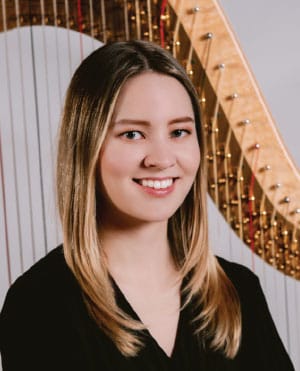
Katherine Siochi
Katherine Siochi joined the San Francisco Symphony as Principal Harp beginning in the 2023–24 season and makes her SF Symphony solo debut with this performance. She was previously principal harp of the Minnesota Orchestra, Kansas City Symphony, and Sarasota Orchestra, and has appeared as a guest with the Chicago Symphony and New York Philharmonic. She was the gold medalist of the 2016 USA International Harp Competition.
As a soloist, Siochi has performed in China, Hong Kong, Israel, and at Lyon & Healy Hall in Chicago. She has served as a concert artist for the American Harp Society, presenting solo concerts and masterclasses across the United States. Recently she also served as artist-faculty at Aspen Music Festival and School, teaching and performing with the Aspen Festival Orchestra.
Siochi earned her bachelor’s and master’s degrees from the Juilliard School as a student of Nancy Allen, and also studied piano as a secondary instrument. In 2021 she released her debut album, Nocturne, on Lyon & Healy Records.
Read an interview with Katherine Siochi.

